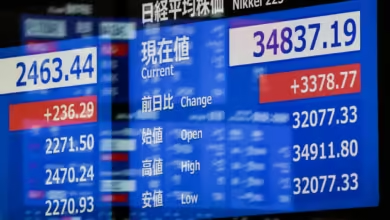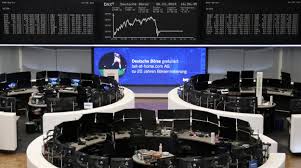Market Focus Shifts From Trump Tariffs To Treasuries Amid Looming Yield Crisis- deVere Group CEO

Markets may be dismissing President Trump’s tariff threats—but investors should brace for a far more dangerous development: a looming US yield crisis as the national debt spirals out of control.
This is the assessment from deVere Group, one of the world’s largest independent financial advisory and asset management organizations, following a federal court ruling that blocks the president’s broad tariff powers.
Investors, the firm warns, are becoming less concerned about short-term trade skirmishes and more alarmed by America’s exploding debt pile—and what it means for global markets.
“Tariffs might get headlines, but due to the TACO (Trump Always Chickens Out) trade theory, they’re no longer dictating asset prices,” says Nigel Green, CEO of deVere Group.
According to him, “markets have moved on. What they’re starting to price now is the risk that the US government loses control of its borrowing costs. That’s the real crisis.”
The US Court of International Trade ruled this week that the president’s emergency powers do not give him unilateral authority to impose tariffs on nearly every major trading partner.
While the administration is appealing the ruling, it represents a significant legal setback to the White House’s trade strategy. Analysts expect further tariff plans to be slower, more limited, and subject to drawn-out political and judicial challenges.
“Markets are responding accordingly. Equities are holding firm. The dollar has steadied. Volatility has dropped. Investors are betting that tariffs will be watered down or delayed, and that headline risks will no longer translate into sweeping policy shifts,” notes the deVere Group CEO.
However, this doesn’t mean markets are calm. They are instead refocusing on the growing imbalance at the heart of US fiscal policy.
Washington’s borrowing needs have surged to record highs, with the national debt now above $34tr and showing no signs of slowing.
Recent Treasury auctions have revealed tepid demand, pushing yields higher across the curve.
“The US is issuing debt at a faster rate than global investors can absorb without demanding higher returns,” explains Nigel Green.
“This isn’t inflation-driven, it’s supply-driven. When demand for US bonds weakens at the same time as issuance surges, something has to give—and that’s price.”
The implications are profound. A steep rise in Treasury yields threatens to push up borrowing costs for households, businesses, and governments around the world. It puts pressure on equity valuations, corporate credit, and real estate. It also tightens financial conditions far more broadly than any central bank action.
Unlike tariffs, which can be reversed with the stroke of a pen, a loss of investor confidence in US debt markets is not easily fixed.
“The bond market isn’t a political enemy you can discredit or sidestep,” says Nigel Green.
“It’s the most powerful pricing mechanism in the world—and right now, it’s flashing amber.”
The market is waking up to the scale of the challenge—and if yields move significantly higher, the ripple effects will be global.
With Trump’s legal ability to impose blanket tariffs now sharply curtailed, the administration may pivot more aggressively toward domestic spending and fiscal stimulus ahead of the midterms. That, deVere warns, could further stretch the deficit—and accelerate the bond market’s repricing.
Nigel Green concludes: “The danger now isn’t a trade war. It’s a bond revolt.
“The focus has shifted from tariffs to Treasuries. That’s where the next global risk shock could come from.”




